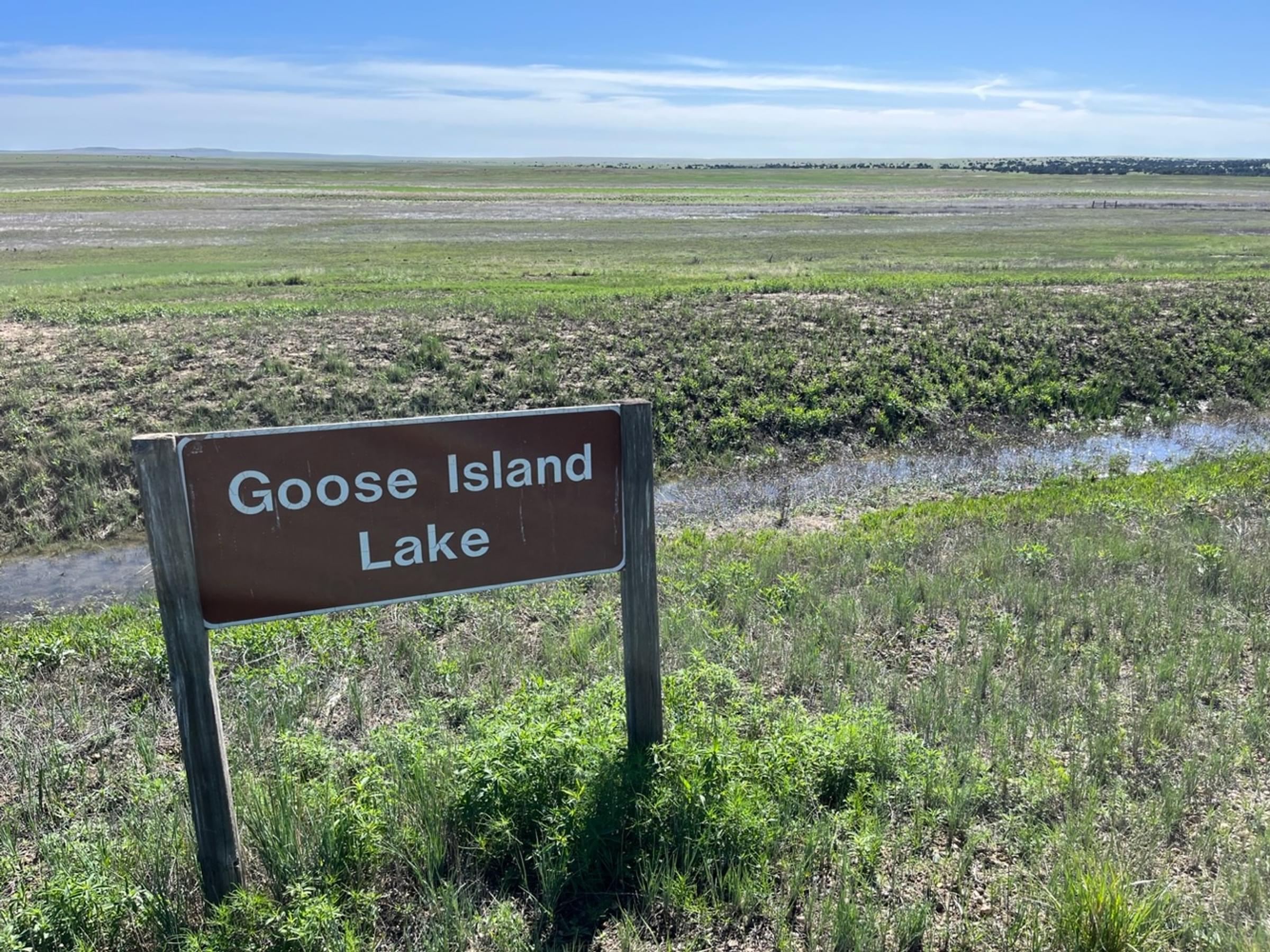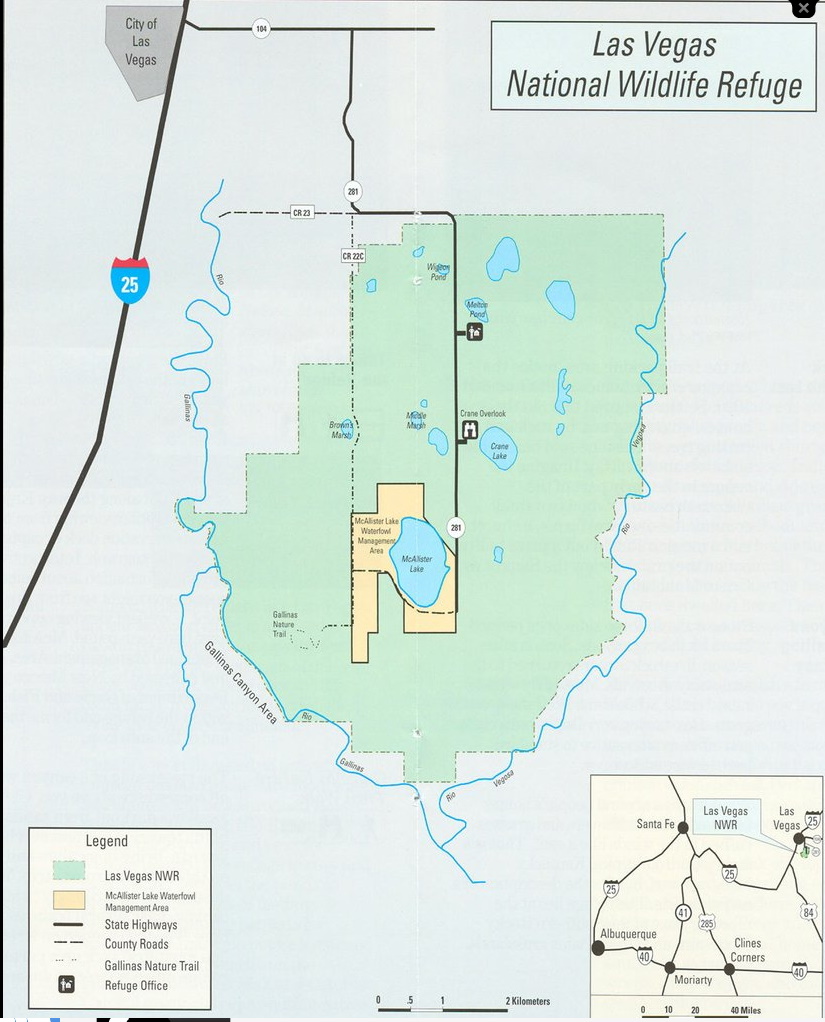Las Vegas NWR--Goose Island Lake Playa (restricted access)

Las Vegas NWR--Goose Island Lake Playa (restricted access)
Las Vegas, New Mexico 87701
Las Vegas National Wildlife Refuge Official WebsiteLas Vegas National Wildlife Refuge map
Tips for Birding
Access to this hotspot is restricted to those with permission to enter the area.
This short-grass prairie playa was historically filled ephemerally by rainwater, and in the 20th and early 21st centuries by irrigation water diverted from the Gallinas River, which passed into Storrie Lake, then made its way through farmlands into the Las Vegas National Wildlife Refuge’s Bentley Lake, from where via a set of ditches and pipes it was distributed to Goose Island Lake and Crane Lake on the refuge before finally ending up in McAllister Lake Wildlife Management Area. As a result, there was adequate water to attract large numbers of winter waterfowl migrants when initial checklists for this hotspot were recorded from 2007 to 2015.
However, the combination of long-term drought, reducing water released from Storrie Lake, and infrastructure deterioration between Bentley Lake and Goose Island Lake means the latter has essentially reverted to its original state as an ephemeral playa. The USFWS does intend to repair the broken infrastructure, which may allow not only the filling of Goose Island and Crane lakes but also the resumption of farming on the refuge, a further attraction for winter migrants. Despite frequent spring rains in 2023, Goose Island Lake was dry while Melton Pond nearer the Refuge headquarters did fill, indicating that a very significant amount of rainfall has to occur to provide water in the playa. As of that time, there had been no geese observed at Goose Island Lake since the fall of 2021, following substantial monsoon rains.
A dirt road runs between the Refuge Visitor Center Headquarters and its maintenance shops, passing to the west of the lake, but far enough away that a spotting scope is required for most identifications. This road, like the hotspot itself, is closed to the public. Checklists are evidently the work of USFWS personnel, researchers with special use permits, or authorized tour groups.
About Las Vegas National Wildlife Refuge
See all hotspots at Las Vegas National Wildlife Refuge
Spanish for "the meadows," Las Vegas National Wildlife Refuge’s history dates as far back as 8,000 BC when old-world Indians inhabited the high plains area.
Pueblo Indians also spent time living in this region, until the 1100s when drought and Apaches forced them out. In the mid-1500s, Spanish conquistadors and missionaries explored and settled the region, and the influence of Spanish culture is still felt today. Westward expansion continued in the late 1800s, and by the turn of the century, the Santa Fe Trail and the railroad made Las Vegas, New Mexico, the place to be.
In 1965, the Las Vegas National Wildlife Refuge was established by the authority of the Migratory Bird Conservation Action for the benefit of migratory birds. The 8,672-acre refuge represents one of the few sizeable wetland areas remaining in New Mexico. It is open to the public for wildlife-dependent recreation, including wildlife watching, hiking, hunting, educational and interpretive programs, and special events.
Here, the gently rolling prairies of the east abruptly meet the rugged terrain of the mountains, gravel-capped mesas and buttes, and deep, narrow river canyons. The high plains refuge is surrounded on three sides by steep, timbered canyons but within the habitat, there is short and tall-grass prairie, timbered sandstone canyons, piñon-juniper woodlands, wetlands, ponds, lakes, and riparian areas.
Above the timbered canyons, the refuge encircles more than 40 small ponds that provide tubers, seeds, and browse for waterfowl. In addition to the ponds, a number of springs discharge to the surface and support a variety of species, including several native fish like the Rio Grande chub, longnose dace, white sucker, and fathead minnow. These ponds are critical to birds migrating along the Central Flyway as they depend on the refuge as a place to rest and refuel during their long journey.
Nesting on the refuge are nearly one-third of the documented bird species found on the refuge, including long-billed curlews, avocet, Canada geese, mallards, northern pintails, blue-winged and cinnamon teal, gadwall, and ruddy ducks.
The sandhill cranes arrive in the fall as they migrate to their winter home. Bald eagles, northern harriers, and American kestrels are frequently sighted soaring above the refuge scanning the grasslands for prey or attracted to the hundreds of ducks and geese on the refuge’s open waters. Migrating shorebirds like long-billed dowitchers and sandpipers, probe the mudflats in early fall and spring. In the woodlands, wild turkeys wander in search of a meal, and on the prairies. Rocky Mountain elk blend into the grasses, home to badgers and ground squirrels.
Features
Restrooms on site
Wheelchair accessible trail
Entrance fee
Roadside viewing
Content from Las Vegas National Wildlife Refuge Official Website and John Montgomery
Last updated June 9, 2023
